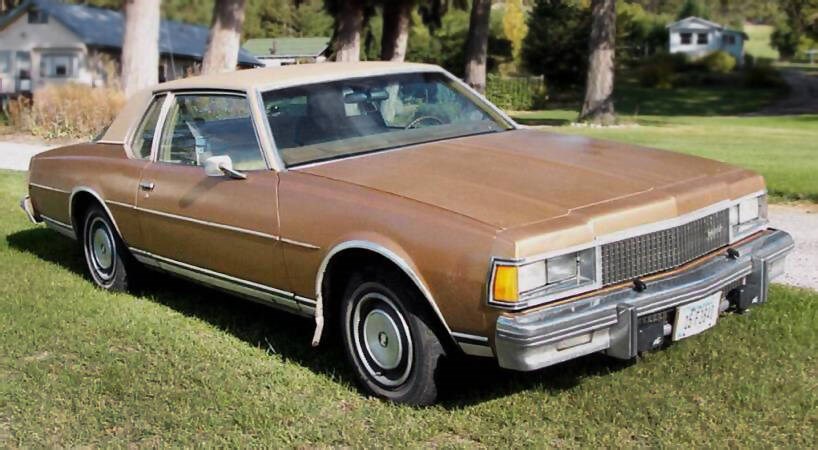Every decade has its automotive flavour. The 19-teens were dominated by the rise of Ford’s mass production. The 1920s brought refinement of cars and movement to closed bodies.
The 1930s saw industry attrition, reduced sales and huge classics in the midst of the Depression. The forties had a war induced 3-1/2 year shutdown of auto production and the post-Second-World War scramble to satisfy the pent-up demand. The fifties gave flamboyance, fins and chrome.
The sixties were the last free-wheeling decade with little government oversight, which leads us to our subject — the seventies, a tumultuous one for the American industry.
The decade started normally enough, but seeds sown in the sixties started germinating. A significant one was consumer advocate Ralph Nader’s 1965 book “Unsafe At Any Speed” with its documented evidence of the industry blatantly disregarding automobile safety and pollution.
American cars were still mostly large and thirsty. Muscle Cars with huge V-8s in mid-size bodies spawned by the 1964 Pontiac GTO reached their outrageous peak in high-winged 1970 Dodge Charger Daytonas and Plymouth Superbirds. Engines of over 7.0 litres were common.
Pollution controls started degrading engine performance as engineers struggled meeting tightening emissions standards with methods like air pumps, retarded ignition timing and lean air-fuel mixtures. A new word, driveability, entered our vocabulary and performance suffered but fuel economy concern was still relatively minor.
In 1972 some reality came to horsepower claims when the industry began quoting SAE (Society of Automotive Engineers) net, as-installed, horsepower ratings rather than lab-generated gross figures.
Compression ratios fell to accommodate lower octane non-leaded gasoline required by emission-reducing catalytic converters. Advertised power fell overnight: a 5.9 litre 200 horsepower 1971 Chevrolet V-8 became 1972’s 165 horsepower V-8.
The big shock came late in 1973 when the Arab-Israeli Yom Kippur war brought the decade’s first “oil crisis.” With gasoline supplies threatened, motorists panicked. Prices rose and fuel economy became paramount.
Small car sales soared. As sub-compact “import fighting” Ford Pintos and Chevrolet Vegas became hot sellers, big cars languished. GM tapped its international arm to design the subcompact 1976 Chevrolet Chevette.
Honda’s new 1973 Civic arrived at precisely the right time to capitalize on fuel consumption worries, paving the way for small, good handling cars. Then the jewel-like 1976 Honda Accord signalled that the Japanese were a genuine threat. The 1978 Accord sedan sealed it.
By mid-decade General Motors sensed the era of ever larger cars was ending. Its smaller 1976 Cadillac Seville with electronic fuel injection was the first straw in the wind. GM’s courageous “downsized” 1977 full sized Chevrolet Caprice, et al, started the industry on its way to smaller cars.
But the mercurial marketplace was changing again. As energy crisis memories faded, fuel-efficient cars gradually fell from favour and interest returned to big cars. Dark rumours circulated that the energy crisis had been a giant oil industry conspiracy.
But the inexorable march of legislation precipitated by the 1973 oil crisis was in motion. The 1975 U.S. Energy Policy and Conservation Act required auto manufacturers to attain a Corporate Average Fuel Economy (CAFE) fleet average of 18 mpg (U.S.) in 1978, rising incrementally to 27.5 mpg in 1985. There was no equivalent Canadian legislation, but manufacturers agreed to meet U.S. averages in Canada.
By the time CAFE standards kicked in, much of the market had swung back to larger cars. It became so critical that Ford, for example, rationed V-8 engines so Pinto sales would balance LTDs and Thunderbirds to meet CAFE.
Manufacturers lowered small car prices until they generated little profit, but were needed to meet CAFE targets. In 1978 General Motors resorted to converting an Oldsmobile V-8 gasoline engine to diesel, a troublesome venture as it turned out.
As the decade neared its end, conditions began improving. Electronic engine management, the industry’s “saviour,” and the catalytic converter gradually increased economy and reduced emissions, two goals previously thought incompatible. Buick returned to turbocharging in 1978, gaining V-8 performance with six cylinder economy.
On the safety front, seat belts were standard equipment. Air bags appeared in the 1974 Oldsmobile Toronado but would take more than a decade to be embraced by the public. Disc brakes and radial tires added safety and fuel economy.
If confirmation was needed that the oil supply was largely influenced by an unstable Middle East, it came in 1979 when the deposing of the Shah of Iran precipitating a second energy crisis.
Fortunately, the American auto industry was better prepared. Chrysler had its subcompact front drive 1978 Dodge Omni/Plymouth Horizon. Ford had its imported Fiesta, and GM’s smaller downsized X-cars, the Chevrolet Citation, et al, were imminent.
Although the seventies was a tumultuous decade of global oil politics and forced technical developments, it laid much of the groundwork for the outstanding cars of today.



